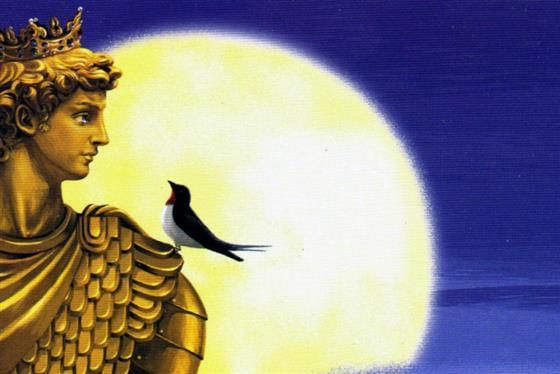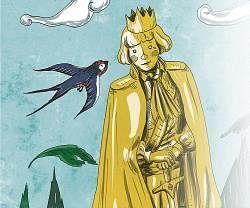|
The swallow is motivated by the prince's sorrow and his desire to help the townspeople by delivering the prince's jewels to those in need. |
Card: 2 / 36 |
|
False. The Happy Prince is sorrowful as he observes the suffering of the townspeople. |
Card: 4 / 36 |
|
The statue cracks, revealing a heart of lead that does not melt when the statue is destroyed.  |
Card: 6 / 36 |
|
The Happy Prince symbolizes compassion and regret, as he realizes the suffering of his people after his death. |
Card: 10 / 36 |
|
True or False: The Happy Prince was aware of the poverty in his kingdom while he was alive. |
Card: 13 / 36 |
|
False. The Happy Prince was unaware of the suffering in his kingdom during his life. |
Card: 14 / 36 |
|
How does the relationship between the Happy Prince and the swallow evolve throughout the story? |
Card: 17 / 36 |
|
Their relationship evolves from a chance encounter to a deep friendship based on mutual sacrifice and altruism.  |
Card: 18 / 36 |
 Unlock all Flashcards with EduRev Infinity Plan Starting from @ ₹99 only
|
|
What does the cracking of the prince's statue symbolize after the swallow's death? |
Card: 19 / 36 |
|
The cracking of the statue symbolizes the depth of the prince's compassion and the emotional weight of his sacrifices. |
Card: 20 / 36 |
|
True or False: The townspeople recognize the sacrifices made by the prince and the swallow before dismantling the statue. |
Card: 21 / 36 |
|
God honors them for their noble deeds, immortalizing them as symbols of love and selflessness. |
Card: 24 / 36 |
|
After the swallow's death, what remains of the prince's statue, and what does it signify? |
Card: 25 / 36 |
|
The leaden heart remains unmelted, signifying the prince's unbroken spirit and enduring compassion. |
Card: 26 / 36 |
|
What central theme does "The Happy Prince" convey regarding compassion and selflessness? |
Card: 27 / 36 |
|
The central theme of "The Happy Prince" is that true happiness comes from helping others, even at great personal cost, highlighting the transformative power of compassion and the value of empathy in alleviating suffering. |
Card: 28 / 36 |
|
The sacrifices made by the prince and the swallow underscore the importance of ___ without expecting anything in return. |
Card: 29 / 36 |
|
True or False: In "The Happy Prince," Wilde suggests that selflessness is less valuable than material wealth and physical beauty. |
Card: 31 / 36 |
|
False. Wilde emphasizes that selflessness transcends material wealth and physical beauty. |
Card: 32 / 36 |
|
How do the actions of the prince and the swallow illustrate the interconnectedness of society? |
Card: 33 / 36 |
|
Their actions show that the well-being of one is linked to the well-being of others, reminding readers that we all have a role in making the world kinder and more equitable.  |
Card: 34 / 36 |
|
Fill in the blank: The story suggests that acts of love and kindness endure beyond ___ . |
Card: 35 / 36 |


























